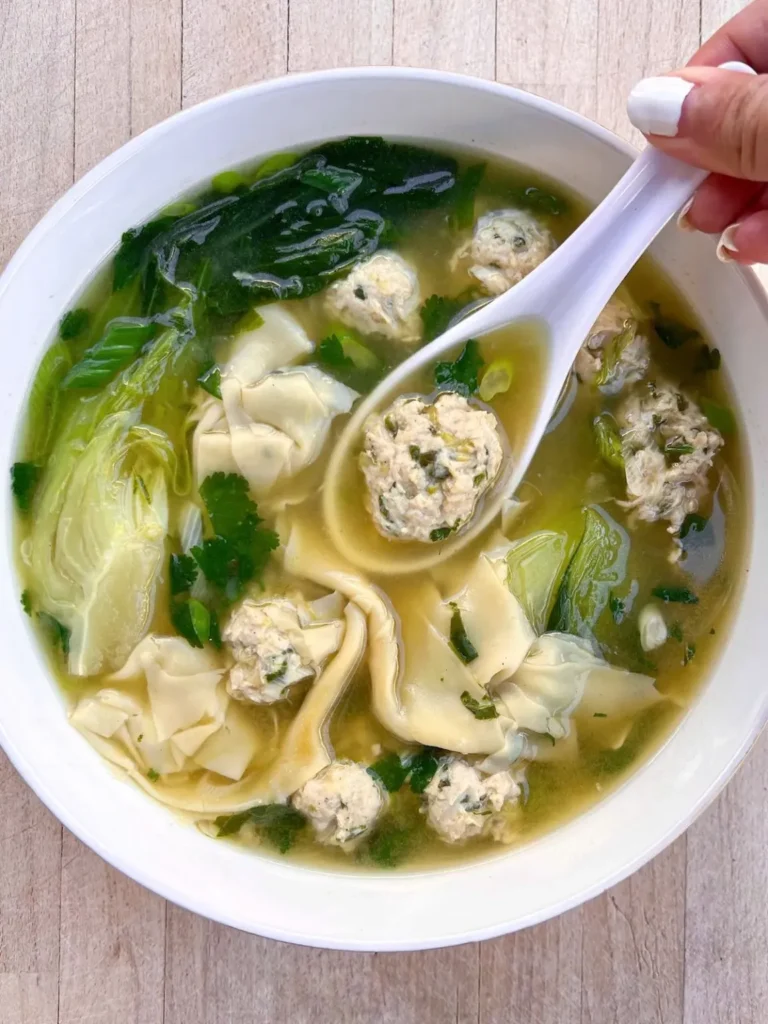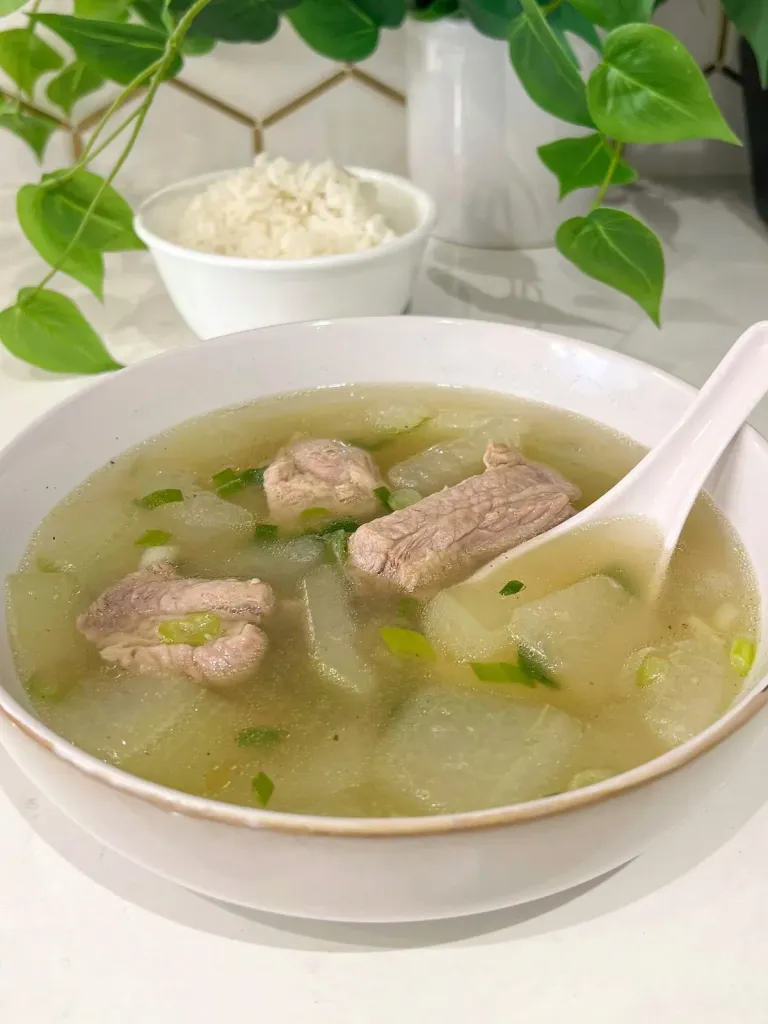I love them with ramen, a little rice snack, or just by themselves. The best part? They only require 4 ingredients. This Japanese bite is so delicious as a topping. I’ve also enjoyed them on their own many times. I still remember when I first wanted to learn how to make these flavorful, soft-boiled eggs. I used just five ingredients. It was after I had a great bowl of ramen. The egg was one of the most significant components.
When the hot broth hits the fresh-made noodles and the toppings, it shows how key a ramen egg is. As far as I see it, no one can say no to a perfectly cooked egg. It sits alongside sliced chashu, a sheet of nori, and bright green onions. Some would even argue it’s a total must! Many people feel it’s hard to do. In my kitchen, I’ve learned most people just overcomplicate this simple recipe. Trust me. It’s way easier than you think.
I started cooking, eggs were one of the first components I learned. Now I know these incredibly tasty eggs are so simple to prepare. I boil a couple eggs. Then I drop them in a soy marinade. I let the peeled eggs soak in the marinade overnight. The next day, they are creamy, silky, and full of umami. It really helps enrich and intensify the enjoyment. The truth is, they are not just for ramen alone. I enjoy these delicious eggs anytime. I try many different ways to serve them. Over the past couple years, I’ve loved experimenting. I keep attempting to make everything from scratch. One day, I hope to assemble that master bowl I’ve dreamed of.
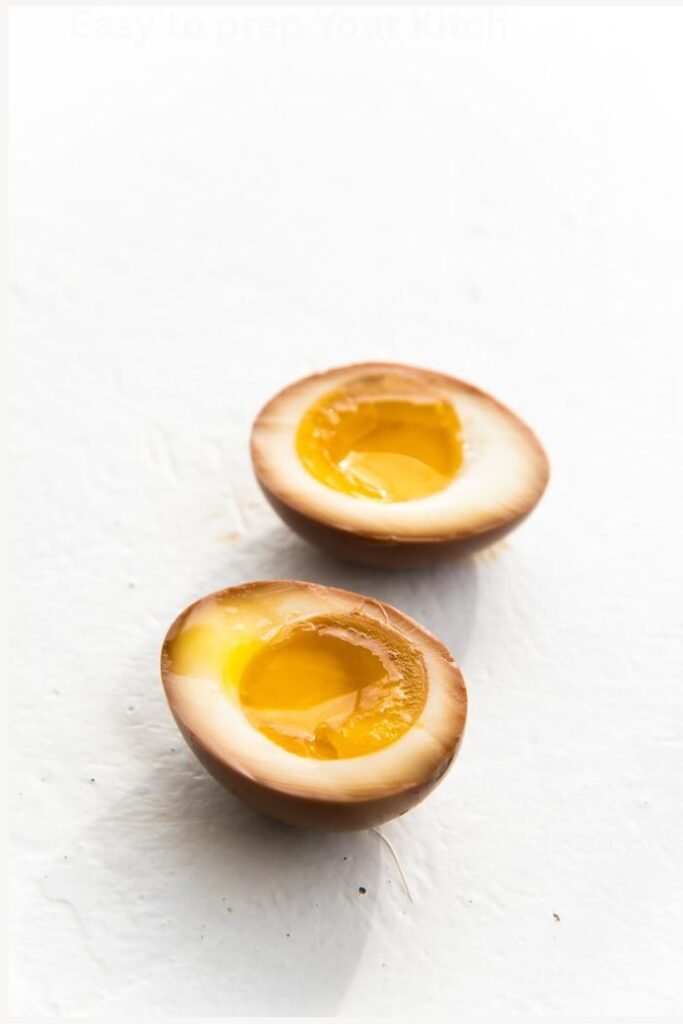
What is a Ramen Egg?
A Japanese ramen egg, often called Ajitama or written as 味玉, is truly one of my favorite things to make at home. You might also see it named Nitamago, ajitsuke, tamago, or even Ajitsuke Tamago (味付け玉子). In Japan, these eggs are usually soft-boiled, so they have a custardy, jammy, sometimes slightly runny center that’s rich, creamy, and full of flavor. They get a strong umami taste and a pretty brown color from soaking in a sweet, salty, soy, and mirin mix, often called a soy-based marinade or a shoyu blend. From my experience making hundreds of these, I can say they’re not just a popular topping on noodles with pork in a bowl of ramen—they’re also great on the side or served by themselves.
This recipe only needs 4 ingredients, and it’s super easy to make at home. I find these eggs so amazingly versatile, which is why I always tell people: don’t limit yourself. I love adding them to salads, stuffing them in sandwiches, or dropping them into a bento for some fun at lunch. They’re also perfect on their own as a snack. I’ve even eaten them straight from the fridge after sitting overnight, and each bite still has that sweetened, soy, and mirin taste. That’s how you know these eggs are truly good—they take little time to prep, but the taste is always big.
How to enjoy ramen eggs
There are so many tasty ways I love to use ramen eggs, and it’s fun to see how thick, rich, or light they can pair up with all sorts of dishes. Sometimes I slice them over avocado toast or layer with tofu for a fresh spread. A steaming broth, whether it’s shoyu, tonkotsu, or miso, is always better when you swap in a ramen egg instead of leaving it plain.
At home, I might pull one out and enjoy it in a cozy bowl with congee, kimchi, or even tucked into a bento box for lunch. The umami is so packed, every bite feels special.
A soft egg like this also makes a great side for Egg Drop Soup, Crab Rangoon, or even with a Deconstructed Wonton Soup. Some mornings, I’ll have them for breakfast, maybe with toast, and other days I’ll drop them into soup or noodles just for the sauce and seasoned warmth. They’re also fantastic with a Cold Tofu Recipe, or alongside Spicy Wontons in Chili Oil. It’s become one of our favorite things to keep marinated and ready. These eggs are so easy to use, whether for a quick snack or adding them to salads and Bánh Mì Charcuterie Board. Honestly, they’re so versatile, it’s hard not to find new ways to enjoy them right here in your own kitchen. I’ve even shown friends how to make a based, soy made egg at home — they always say it’s the best trick they’ve learned.
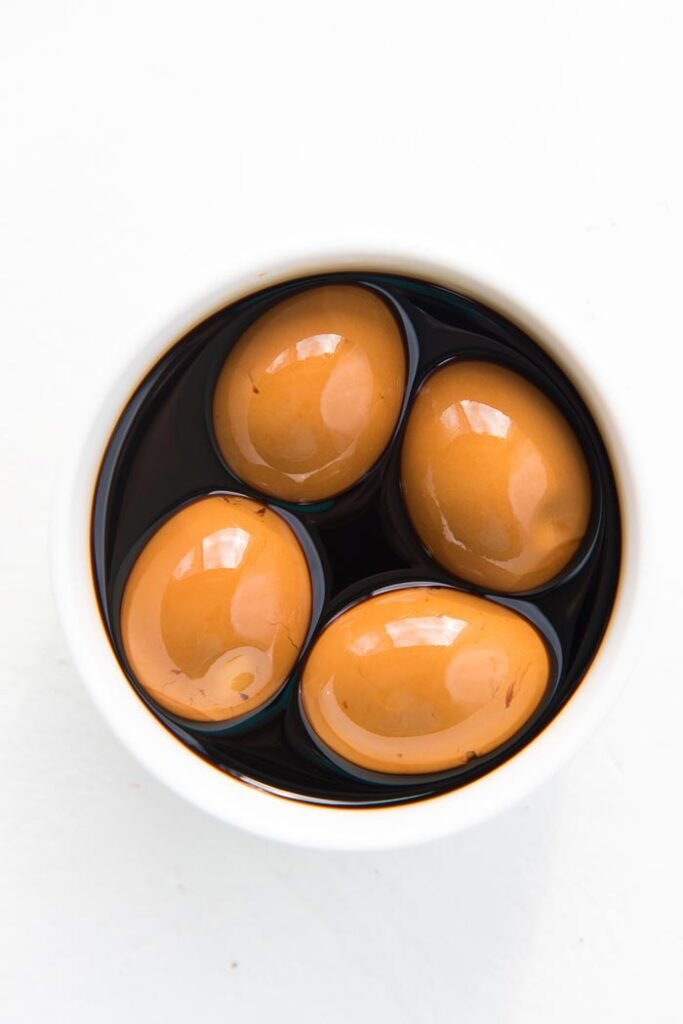
Why you’ll love this Ramen Eggs Recipe
- I think you’ll find this ramen egg recipe is truly something special because it’s so simple yet brings a rich, umami punch that makes any dish pop. You can infuse these eggs in a marinade of soy sauce, mirin, and spices like garlic, ginger, or star anise, letting all those flavors slowly permeate the yolk for a jammy, seasoned bite. I recommend using an air-tight container so the liquid can work properly, and after just 24 hours or even overnight, they’re already tasting amazing.
- Sometimes I’ll leave them for two days or up to 5 days if I want that extra dark color and deep taste. It’s such a versatile recipe; you’re not just stuck adding it to ramen. I often add these eggs to simple bowls, or eat them cold straight from the fridge. They’re preserved so well you can keep them for about a week. If you’re in a hurry, you can marinate for a minimum of 2 hours—though I always say the longer they sit, the more they soak up that savory base.
- This method doesn’t require heating, just gently boiling water to cook them first, then dilute your mixture if you don’t want too strong a taste. It’s an easy way to get that robust, seasoned egg, perfect for adding an extra kick with a sprinkle of cayenne pepper. I love showing friends how different options like this can completely change the way you see a humble egg—it’s one of my favorite kitchen tricks.
Ramen Egg Ingredients
make ramen eggs at home, I’m always amazed at how easy it is. You’ll be surprised that you only need five simple ingredients, and the best part is how much umami, aroma, and flavor they give. I always recommend using large, pasture-raised, or vital farms eggs. The quality makes a big difference for that soft-boiled, rich yolk you want. For the marinade, I keep it traditional with soy sauce, mirin, sake, and sugar, but you can customize with spice additions like chili flakes, or a dash of sherry or vinegar. Sometimes I’ll mix in rice wine or try a low-sodium soy sauce to better balance the saltiness and sweetness.
It’s also smart to taste as you go since different brands can change how salty or sweet the final marinade will be. I’ve learned over time that letting everything submerge fully is key—so pick a bowl that’s just the right size. This is my favorite part of cooking, tweaking flavors until they’re just right. I always have these ingredients ready because they’re so versatile and give that deep, traditional, slightly sweet, slightly savory taste that makes these eggs incredible, not just in ramen, but also with rice, as a snack, or even on toast.
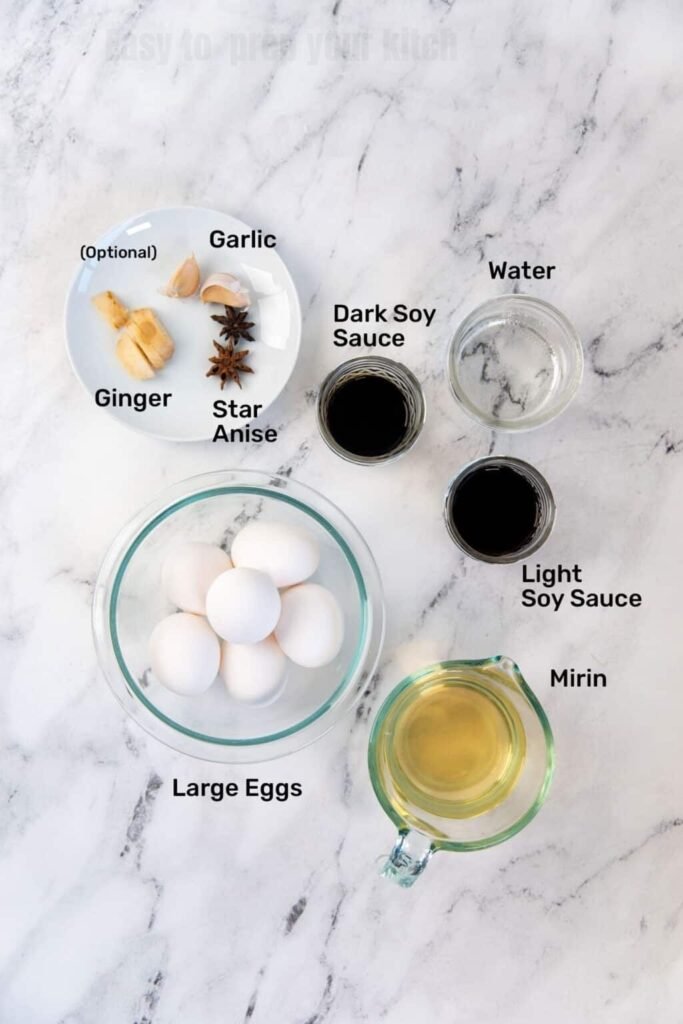
Ingredients
- Eggs: I use large, pasture-raised, or vital farms eggs. They’re packed with umami, give a soft-boiled texture, and hold up beautifully in the marinade.
- Soy Sauce: Choose regular or low-sodium. It adds that classic salty, savory base.
- Mirin: A lightly sweet, rice wine that balances the saltiness and brings a lovely aroma.
- Sake: Adds depth and a gentle rice wine flavor. You can swap for sherry or even a splash of vinegar if needed.
- Sugar: I use white or brown. Brown sugar has molasses, which adds a deeper taste. Usually about ½ tablespoon, but you can adjust.
- Optional Spice Additions: Chili flakes, or a bit of vinegar, depending on how mild or bold you want it.
This classic marinade is so quick to pull together. Just make sure the eggs are fully submerged so they soak up all that umami. Over the years, I’ve played with many versions, but this mix is my go-to because it’s balanced, traditional, and so easy to make at home.
What changed from the 2011 Recipe?
Looking back at my 2011 recipe, I see just how much my approach to these ramen eggs has grown. In the past, I started with a very basic version, mainly using water, sake, wine, and sugar to pull out the umami and sweetness. But over multiple times making them, I found better ways to bring out those flavors.
I’ve updated it by adding amino acids from things like fermented rice or even a touch of alcohol, which helps enhance the taste. I also learned it’s perfectly safe to consume if you use a safe, familiar brand and keep the kids in mind. Sometimes, I’ll boil a bit longer or try different tweaks to see what works best.
My family loves when I switch it up; we’ve tested so many little refinements. For example, I once added a bit of old sherry instead of sake, which gave it hints of new depth. Honestly, it makes me wonder how many other tiny changes can still improve it. So if you’re ever making these at home, don’t be afraid to try different things — you might find a winner, just like I did.
This journey also taught me why some recipes call for more acids or marinating longer, as it helps keep the eggs off that overly salty edge. I shared these tweaks with friends who can’t get enough, proving that even the most original ramen ideas can always get better with a few smart reasons behind them.
How to Make Ramen Egg

Step 1: Cook Eggs
Ramen at home, the first thing I always do is boil the eggs, which is key to getting that perfect jammy yolk.
I like to add just the right amount of water in a pot or pan, usually about 3 to quart size, and bring it to a high heat. Once it starts bringing those rolling bubbles, I gently lower each egg in with a spoon to avoid cracking, then cook on medium-high for 6, 7, or 8 minutes, depending on how runny or firm I want the center.
After that, I immediately stop the cooking by placing them into ice water, which helps with peel later and shocks the eggs so they don’t cook further. I’ve found this also keeps that restaurant quality jammy texture we all love. Once they sit for a few minutes and are cool and dry, I start to peel them carefully. This part can take a bit of patience, but trust me—it’s worth it.
I always recommend peeling over a bowl so you can catch any little pieces. Your preference might be for softer yolks, like I often make for my family, or firm ones if you’re going to let them soak later in the sauce. Either way, this step lays down the base for amazing ramen eggs that taste just like your favorite restaurant bowl.
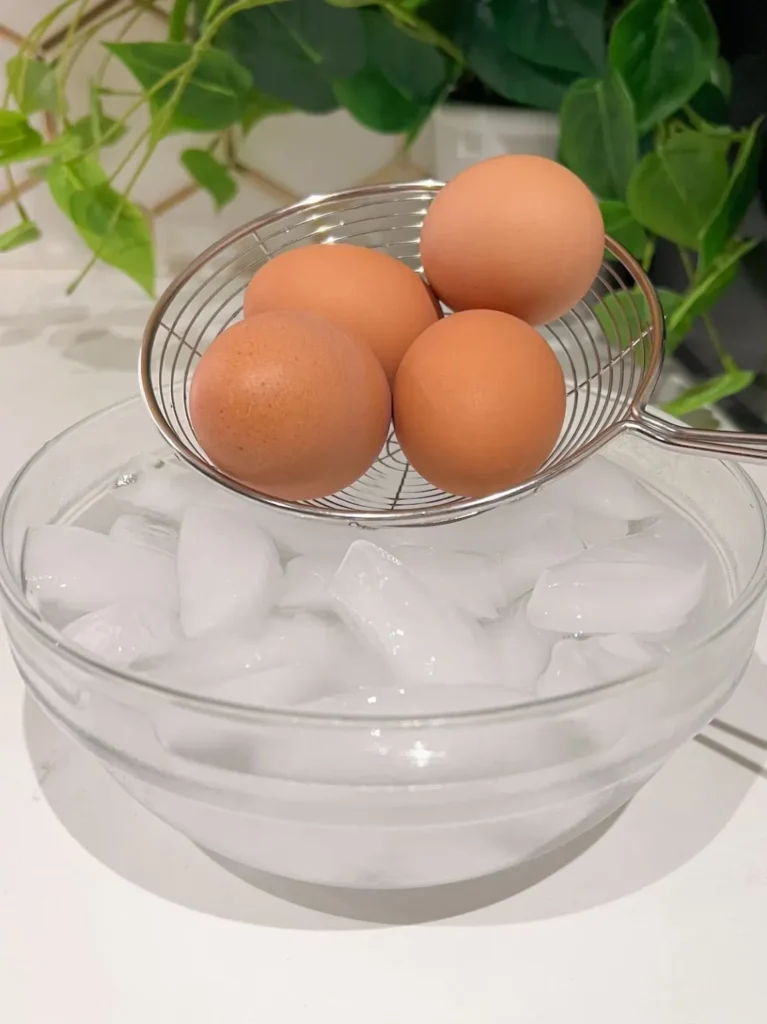
Step 2: Make Ramen Egg Marinade
To make the perfect marinade for ramen eggs, I like to mix soy, mirin, a bit of sugar, and water together in a container until it’s all smooth. You can adjust the taste to your liking, adding more if you want it sweeter, or less if not. It’s good to test a little on a spoon so you know it’s just right. I sometimes use a ziploc bag instead of a bowl, since it can fully cover the eggs without needing a huge amount of liquid. Make sure the eggs are fully covered, whether in a bag or a wide dish. This helps avoid splotchy spots so they marinade evenly. If you like, you can also add an additional splash of sauce to give it an extra kick. I always say, choose what’s appropriate for your course or mood. I already tried this with a bit of citrus too, and it was good. Ensure you use equal parts soy and mirin for a balanced flavor, but of course you can adjust it. If you’re not sure, start small—I would rather make a small batch and adjust than end up with too much. This simple step will have your eggs soaking up all that rich taste in no time.
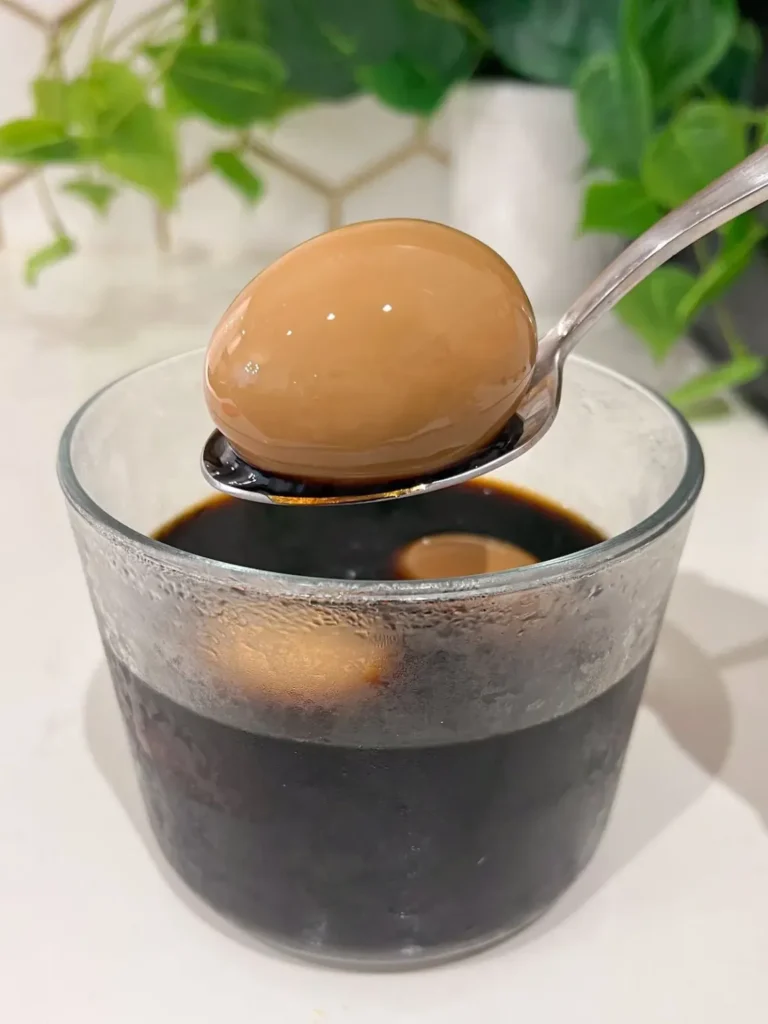
Step 3: Marinate Ramen Egg
To finish these ramen egg beauties, I always drop them gently into a container or a ziploc bag so they’re fully submerged in the marinade. I like to make sure they’re covered all the way, which helps the color and flavor soak in even better. I’ll add a bit more marinade if needed, then seal it up tight and let the eggs rest overnight or up to 12 hours—sometimes after that if I want a deeper taste. I always rotate or shake the bag occasionally to ensure the marinade’s distribution stays same, which makes each bite equally tasty. You can also use a small plate to weigh them down so they stay fully under. This step is key; it really helps the eggs marinate and pick up that rich taste. I’ve found it best to check once or twice to be sure they’re sealed properly and doing their magic in the fridge. Trust me, you can’t skip this if you want that signature ramen egg flavor. It’s these simple moves that make homemade ramen eggs so satisfying—and they’re always a hit when I serve them to guests.
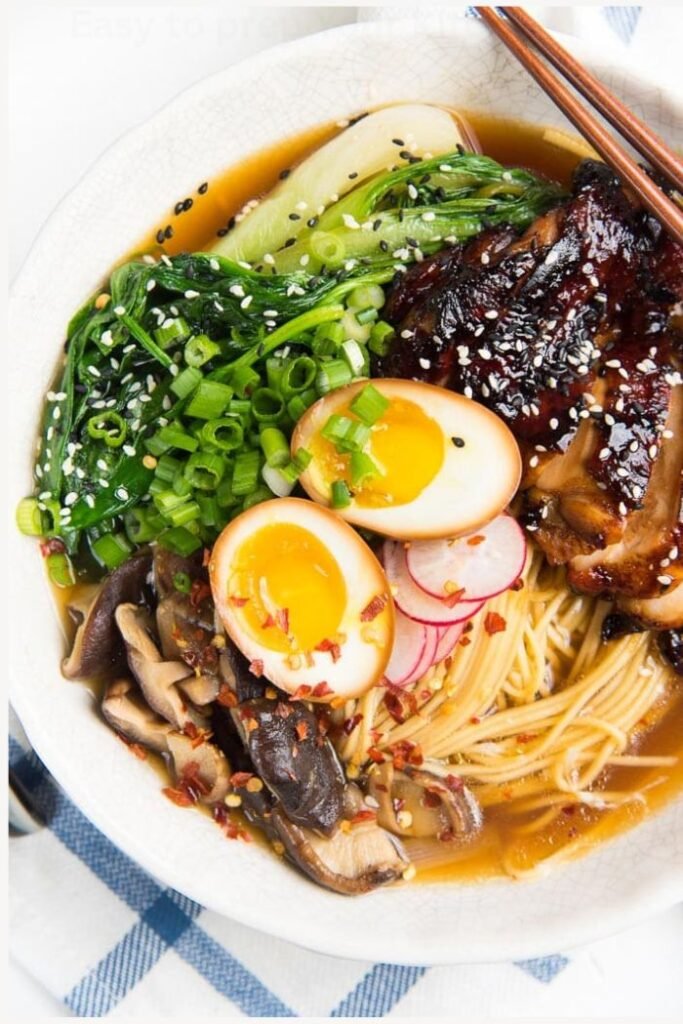
Step 4: Serving Suggestions
I always tell people there’s no single way to serve these delicious ramen eggs, because whatever your mood or own style, they’ll fit right in.
Some days I simply enjoy them as a quick snack, while other times I’ll eat them on top of a warm bowl of rice for a tasty twist that my family really loves.
They’re also typically used as a topping in ramen, of course, which is really the classic way, but don’t feel limited by that—these ajitama eggs are so versatile. If you like, you can remove them from the marinade after about 12 hours for a lighter color, or leave them in longer if you want a deeper, more salty hit. It’s a matter of preference, and I’ve found over the years that even small changes can become a big deal in how they taste.
So choose to let them sit for hours or overnight, then serve them with rice, in ramen, or even on their own—regardless of how, they’ll be too good to resist. Just watch that they don’t get overpowering, because after all, you still want to taste the egg itself. I can promise you, if you like little kitchen experiments as much as I do, you’ll find endless ways to enjoy these ajitama eggs and make every bite really worth it.
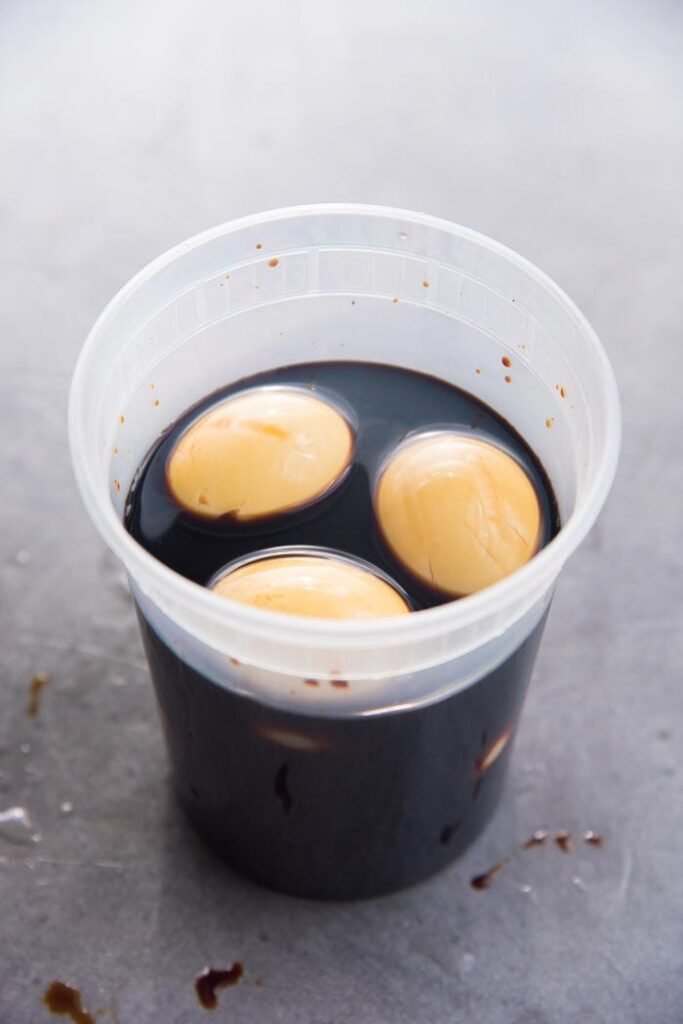
Important Tips for This Recipe
Hot Water Method for Cooking the Eggs
I prefer the hot water method when making ramen eggs because it’s consistently reliable and works great even if you’ve already tried other methods. I start by bringing water to a boil in a pot, then gently lower the eggs in and let them boil for exactly 6 minutes, depending on how soft boil you like them. The timing can vary slightly depending on your stove or heating method, but with practice, you’ll get it right every time. I don’t walk away—just wait and watch the time carefully.
Once done, I move them to cold water to stop cooking. This method is faster and easier than others, and it takes the guesswork out of how to get that jammy center. If you’re like me, who always wants that perfect yolk, this is the way to go. You can even use a timer on your phone—it’s a small step that makes a big difference. It’s mentioned in many Japanese kitchens, and in my experience, the boil method gives you better control. Just be sure to use a ½-inch long pin to poke the wide end if you’re worried they might come out cracked.
Cooling and Peeling the Eggs
Once the eggs are done boiling, I gently transfer them into cold water right away—this helps make peeling so much easier later. From my kitchen experience, the bottom part of the egg is the easiest place to start peeling. I like to give it a little crack at the end, then roll it on the surface to loosen the shells. Be sure not to do this too hard—just enough so the shell lifts without tearing the whites. Peeling under running water or in a bowl of water makes it even smoother. I always go from top to bottom because it’s purely the best way to avoid those raggedy peels. Using marinade on a smooth egg is key—if the surface is torn, it doesn’t absorb evenly. The reason this works well is that the wider surface gives your marinade more room to work. And if you’re doing several at once, timing is everything—make sure you’re not rushing, or you’ll be peeling forever. This method is what I prefer for a very clean finish, and I clearly remember how messy it was before I figured it out. So, if you want aesthetic, evenly coated ramen eggs, don’t skip this step. It’s all about being sure, taking your time, and handling them with care—otherwise, the eggs will look torn and patchy. And yes, I need to say it—it really is worth it.
No Cook Soy Sauce Marinade
For a simple and good no cook soy sauce marinade, I recommend mixing soy sauce, mirin, garlic, star anise, chili, and other spices in a container at room temperature. You don’t need to heat the sauce-based mix—just stir it well to blend all the flavors. Let the eggs marinate for at least 12 to 24 hours so the taste can fully infuse. If you want a stronger taste, leave them longer. Make sure to place the eggs so they are fully submerged in the marinade to get even saltiness and flavor all around. This way is easy and keeps the marinade fresh and bright without the need to cook or heat the ingredients first. It’s a quick and sure way to make tasty ramen eggs every time.
Tips to Ensure a Jammy Egg Yolk
To get a consistent and perfect jammy egg yolk for your ramen eggs, timing and temperature are very important. Always start by letting your eggs reach room temperature before you cook them. This helps to stop the shells from cracking. When you cook, first bring the water to a boil. Then lower the heat to medium-high and gently add the eggs. Cook them for about 6 to 7 minutes depending on how runny you want your yolk. Once they are done, quickly put the eggs into an ice bath or very cold water for about 15 minutes. This cools the eggs fast and stops them from cooking more. From my experience, using an ice bath lets you use the eggs right away or store them in the fridge safely. This way, the yolks stay creamy but a bit firm, like the soft, jammy centers you see in restaurants. Keep in mind, the exact time can change depending on your stove and pot, so practicing a few times helps a lot.
Storage
From my own kitchen experience, I’ve found that ramen eggs (or ajitsuke tamago) are best when eaten within 3–4 days. They can last up to 1 week in the fridge if stored the right way. Always keep them in a sealed container to protect their flavor and safety. I like to use a larger one so the eggs don’t get soaked on just one side or sit too long in one spot.
After marinating, the eggs keep taking in the marinade. If you like runny yolks, marinate for about 8 hours. If you want them more jammy, leave them in for at least 36 hours, based on what you like. You can reuse the marinade, but only for one more batch, and not past 1 week.
I always write down the date so I know when the eggs went in. If it tastes too salty, you can add a little water to dilute it. When you take out the eggs, use a clean spoon or tool to keep things safe. I’ve learned not to use the same marinade more than once—it’s not safe. Soft-boiled eggs should be kept apart from leftover marinade, especially if you’re making a big batch.
Don’t move them around too much, and if you want to reheat, do it gently. We suggest eating them cold, but if you really want them warm, just be careful not to cook the yolks more. Whether you eat them with ramen, over rice, or as a snack, good storage is the key to the best result every time.
More Recipes You Might Like
Restaurant-Style Ramen Eggs (Ajitama) Ready in 15 Minutes!
Description
Ramen Eggs, also known as Ajitama or Ajitsuke Tamago (味玉), are soft-boiled eggs that soak up a savory, sweet marinade made with soy sauce, mirin, a bit of sake, and sometimes a splash of rice wine vinegar. After boiling quality eggs—like pasture-raised or Vital Farms—for about 6 to 7 minutes, you let them rest in an ice bath before peeling. Then they dive into that umami-packed marinade for at least 4 hours, though leaving them overnight or even up to 48 hours makes them extra flavorful. The result is a beautiful brown egg with a jammy, custardy yolk that tastes both salty and sweet, adding depth to any bowl of tonkotsu, shoyu, or miso ramen.
From my own kitchen experiments, I’ve found that adding little extras like garlic, ginger, or even a dash of sherry makes the flavors pop even more. These eggs aren’t just perfect with ramen—they’re amazing on congee, tucked into a bento, laid over cold tofu, or just eaten right from the fridge as a quick protein-rich snack. It’s truly impressive how only 4 to 5 simple ingredients can come together to create something this satisfying, showing why these Japanese eggs are loved worldwide.
Ingredients
Nutrition Facts
Servings 6
Serving Size 6 ramen egg
- Amount Per Serving
- Calories 120kcal
- % Daily Value *
- Total Fat 5g8%
- Saturated Fat 1.6g8%
- Cholesterol 186mg62%
- Sodium 995mg42%
- Potassium 94mg3%
- Total Carbohydrate 8.6g3%
- Sugars 4.6g
- Protein 8g16%
- Vitamin A 270 IU
- Calcium 33 mg
- Iron 1.2 mg
- Vitamin D 41 IU
- Vitamin E 0.5 IU
- Vitamin K 0.3 mcg
- Folate 24 mcg
- Biotin 10 mcg
- Pantothenic Acid 0.7 mg
- Phosphorus 105 mg
- Iodine 24 mcg
- Magnesium 9 mg
- Selenium 15.2 mcg
* Percent Daily Values are based on a 2,000 calorie diet. Your daily value may be higher or lower depending on your calorie needs.
Note
- Can be enjoyed cold or at room temperature
- Great as a snack, side dish, or protein topping
- Pair well with ramen, rice bowls, noodles, or salads
- For best flavor, marinate for at least 12 hours
- Store in an airtight container in the refrigerator
- Stay fresh for up to 3–4 days
- When serving in hot dishes, add last to keep yolk soft
- Use clean utensils to prevent contamination


